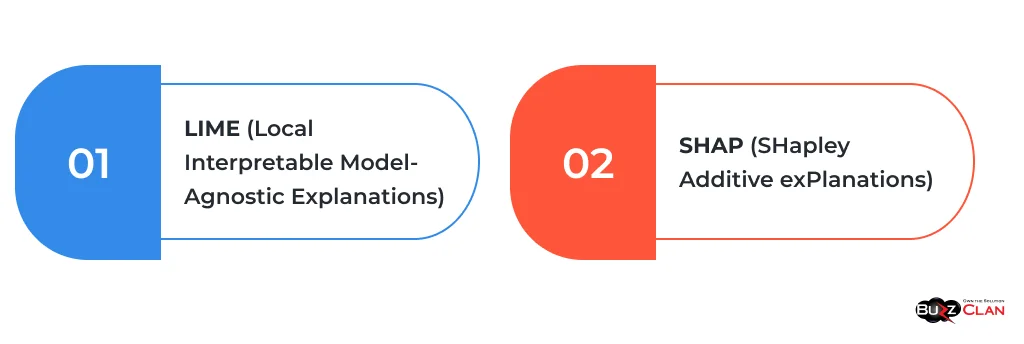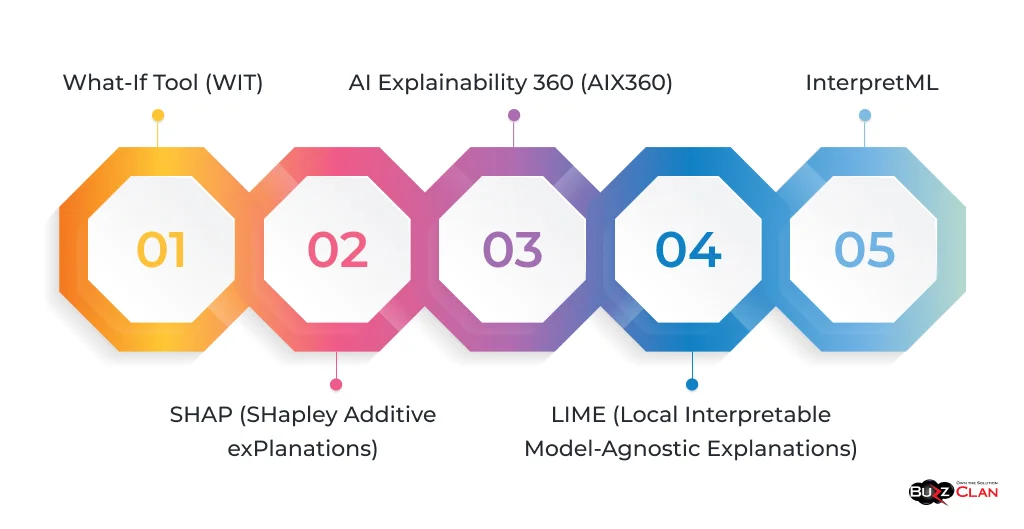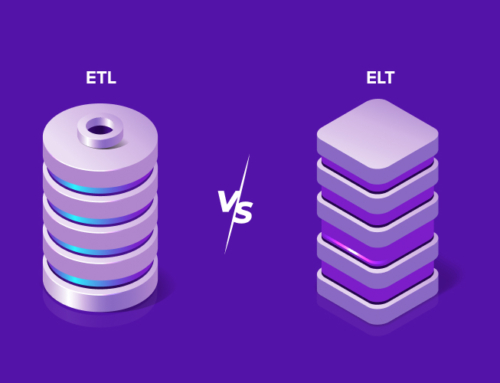Explainable AI (XAI): Is it the future of Responsible AI?
Ananya Arora
May 2, 2024
Introduction
As Artificial Intelligence (AI) becomes increasingly integrated into our daily lives, making decisions that impact everything from our social media feeds to our credit scores, the demand for transparency in these systems has never been higher. The complex algorithms and vast amounts of data that power AI often feel like an impenetrable black box, leaving us wondering how these systems arrive at their conclusions. This is where Explainable AI (XAI) comes in.
XAI is a set of techniques and approaches to make AI systems more transparent and interpretable. By providing insights into how AI models make their decisions, XAI fosters trust in these systems and enables us to understand, validate, and challenge their outputs. Now, let's dive into what XAI means and why it's becoming a non-negotiable aspect of AI development.
Understanding Explainable AI (XAI)
AI systems are making decisions that affect every part of our lives, but how they do it can sometimes be a black box. The inner workings of AI algorithms, from deep neural networks to complex decision trees, can be difficult to decipher, even for the experts who designed them. This lack of transparency can lead to mistrust, bias, and even harmful consequences when AI systems make critical healthcare, finance, and criminal justice decisions.
We're opening up that black box to understand how AI thinks. XAI is a field of research and practice that aims to make AI systems more explainable, interpretable, and accountable. At its core, XAI is about providing human-understandable explanations for AI decisions. These explanations can take many forms, such as visual representations, natural language descriptions, or mathematical equations, depending on the complexity of the AI system and the intended audience.
The principles of XAI are rooted in the idea that AI should be designed with transparency and accountability in mind from the start. AI developers should consider how users, regulators, and other stakeholders will explain and interpret their models throughout development. By prioritizing explainability, AI systems can be more easily audited, debugged, and improved.
The Mechanics of XAI

At its core, AI is a set of algorithms and data processes that can seem complex and impenetrable. The inner workings of machine learning models, such as neural networks and support vector machines, involve intricate mathematical operations and vast amounts of training data. Understanding how these models arrive at their predictions can be daunting, even for the experts who created them.
There's a way to shed light on these complex processes. XAI techniques aim to demystify AI by providing clear and concise explanations for how models make their decisions. These explanations can be generated using a variety of approaches, depending on the type of AI system and the desired level of detail.
One common approach to XAI is designing inherently interpretable AI algorithms. This means that the model's decision-making process is transparent and can be easily understood by humans. Examples of interpretable models include decision trees, rule-based systems, and linear regression models. These models have clear and explicit decision boundaries that can be visualized and explained in terms of the input features.
Another approach to XAI is to use post-hoc explanation techniques. These methods aim to explain the behavior of complex, black-box models after they have been trained. One popular post hoc technique is LIME (Local Interpretable Model-Agnostic Explanations), which generates local explanations for individual predictions by perturbing the input data and observing how the model's output changes. Another technique is SHAP (SHapley Additive exPlanations), which assigns importance scores to each input feature based on its contribution to the model's output.
Counterfactual Explanations in AI
Understanding AI decisions is about the 'how' and the 'why not.' While traditional XAI techniques focus on explaining why a model made a particular decision, counterfactual explanations provide insight into what changes would have led to a different outcome.
Counterfactual explanations provide that insight. A counterfactual explanation is a statement that describes how the world would have to be different for an AI system to make a different decision. For example, if an AI system rejects a loan application, a counterfactual explanation might be: "If your income were $10,000 higher per year, your loan would have been approved."
Counterfactual explanations are powerful because they provide actionable insights into how to change the outcome of an AI decision. They can help individuals understand what factors contributed to a particular decision and what steps they can take to achieve a different result in the future. Counterfactual explanations can also help identify potential biases or errors in AI systems by highlighting the features that most impact the model's output.
In practice, generating counterfactual explanations can be challenging, as it requires exploring the vast space of possible input variations and their corresponding outputs. However, researchers have developed techniques such as contrastive explanations and adversarial examples to generate counterfactual explanations for complex AI systems efficiently.
Tools and Technologies for XAI

We can translate complex AI decisions into understandable narratives with the right tools. As the field of XAI has grown, so has the ecosystem of software and platforms designed to facilitate the creation and communication of AI explanations.
You can use these tools to unlock the reasoning behind AI decisions. One popular tool for generating explanations is the What-If Tool (WIT) developed by Google. WIT is an interactive visual interface that allows users to explore and understand the behavior of machine learning models. It enables users to visualize the impact of different input features on the model's output, generate counterfactual explanations, and perform fairness assessments.
Another notable XAI platform is IBM's AI Explainability 360 (AIX360), an open-source toolkit that provides a comprehensive set of algorithms and techniques for explaining AI models. AIX360 includes methods for generating feature importance scores, counterfactual explanations, and rule-based explanations. It also provides a suite of visualizations and user interfaces for communicating explanations to different stakeholders.
Other XAI tools and technologies include Microsoft's InterpretML, a toolkit for building interpretable machine learning models; LIME (Local Interpretable Model-Agnostic Explanations), a technique for generating local explanations for black-box models; and SHAP (SHapley Additive exPlanations), a unified approach for interpreting model predictions based on game theory principles.
As the demand for XAI grows, we can expect continued innovation in the tools and technologies that support the creation and communication of AI explanations. These tools will make AI systems more transparent, accountable, and trustworthy.
Explanation-Based Learning in AI
Learning is at the heart of AI, but explanation-based techniques can clarify how AI learns. Explanation-based learning (EBL) is a subfield of machine learning that focuses on generating explanations for an AI system's learned concepts and rules.
This approach improves AI and our understanding of it. EBL algorithms aim to create more interpretable and explainable models by incorporating domain knowledge and human-understandable concepts into the learning process. The goal is to build AI systems that make accurate predictions and explain how they arrived at those predictions.
One key aspect of EBL is using background knowledge to guide learning. This knowledge can include information about the relationships between features, concepts' hierarchical structure, or the data's causal mechanisms. By incorporating this knowledge into the learning algorithm, EBL can generate models more aligned with human understanding and reasoning.
EBL is closely related to other XAI techniques, such as rule-based and concept-based explanations. Rule-based explanations provide a set of if-then statements describing an AI system's decision-making process. In contrast, concept-based explanations aim to map the internal representations of a model onto human-understandable concepts.
The benefits of EBL extend beyond just improving the interpretability of AI systems. By generating explanations during the learning process, EBL can also help identify errors, biases, or inconsistencies in the model, leading to more robust and reliable AI systems. Additionally, EBL can facilitate knowledge transfer and reuse across different domains and tasks, as the learned explanations can be adapted and applied to new problems.
The Relationship Between AI Explainability, Fairness, and Ethics
Explainable AI isn't just a technical requirement; it's an ethical imperative. As AI systems become more prevalent in high-stakes decision-making, such as hiring, lending, and criminal justice, the need for transparency and accountability becomes even more critical.
XAI is paving the way for fairer and more ethical AI. XAI techniques can help identify and mitigate biases and discriminatory practices by explaining how AI systems make decisions. For example, if an AI system is used to make hiring decisions, XAI can reveal if the model places undue weight on protected attributes such as race, gender, or age. This transparency enables organizations to take corrective actions and ensure that their AI systems make fair and unbiased decisions.
Moreover, XAI is essential for building trust in AI systems. When individuals are subject to AI-driven decisions, they have a right to know how those decisions were made and to challenge them if necessary. XAI provides a means for individuals to understand and question the logic behind AI decisions, promoting transparency and accountability.
XAI ensures AI systems align with human values and ethical principles. By making the decision-making process of AI systems more transparent, XAI enables stakeholders to verify that these systems operate by ethical guidelines and societal norms. This includes checking for fairness, non-discrimination, privacy protection, and other ethical considerations.
In essence, XAI is not just a technical tool but a necessary component of responsible AI development. As AI becomes more integrated into our lives, the ability to explain and justify its decisions will be essential for building trust, ensuring fairness, and upholding ethical standards.
Real-World Applications and Case Studies of XAI

Theoretical knowledge of XAI is invaluable, but seeing it in action brings its importance to life. XAI techniques are being applied across various industries, from healthcare and finance to transportation and education.
Real-world examples can demonstrate the true power of XAI. For instance, in the healthcare domain, XAI is used to explain predictions of medical diagnosis systems. XAI can help build trust in these systems and enable doctors to make more informed decisions by explaining why an AI system recommends a particular diagnosis or treatment.
In the financial sector, XAI is being applied to explain the decisions of credit scoring and loan approval systems. By revealing the factors contributing to a credit decision, XAI can help individuals understand why they were approved or denied a loan and what steps they can take to improve their credit standing. This transparency is critical for ensuring fairness and preventing discrimination in financial services.
Another real-world application of XAI is in the field of autonomous vehicles. As self-driving cars become more common on our roads, the ability to explain their decision-making process will be essential for building public trust and ensuring safety. XAI techniques can be used to provide clear explanations for why a self-driving car took a particular action, such as braking suddenly or changing lanes.
Case studies of successful XAI implementations provide valuable lessons for organizations adopting these techniques. For example, a case study of an XAI system used by a major bank to explain its credit decisions found that it improved customer understanding and satisfaction and helped the bank identify and correct errors in its credit scoring model.
As more organizations adopt XAI techniques, we expect a growing body of real-world examples and case studies demonstrating the tangible benefits of explainable AI.
The Future of Explainable AI
The field of AI is rapidly evolving, and with it, so is how we interpret AI decisions. The need for explainability will only grow as AI systems become more sophisticated and integrated into our lives.
The future of XAI and its role in advancing AI are promising. We expect significant advancements in XAI techniques and technologies in the coming years. Researchers are developing new algorithms and approaches for generating more accurate and intuitive explanations, such as counterfactual and concept-based explanations. A growing focus is also on making XAI techniques more scalable and applicable to a wider range of AI systems, from simple decision trees to complex deep learning models.
Moreover, the future of XAI will likely be shaped by regulatory and societal demands for transparency and accountability in AI. As governments and organizations worldwide develop guidelines and standards for responsible AI development, XAI will play a key role in ensuring compliance and building trust.
In the long term, XAI has the potential to become a fundamental component of all AI systems. Just as user interfaces and documentation are now standard software development features, explainability may become a non-negotiable requirement for AI development. This would represent a significant shift in how we design, deploy, and interact with AI systems, placing transparency and accountability at the forefront.
Ultimately, the future of XAI is about more than just technical advancements; it's about ensuring that AI systems are developed and used in ways that align with human values and promote the greater good. By making AI more explainable, we can create a future where these powerful technologies are effective but also ethical, trustworthy, and beneficial to society.
Conclusion
XAI techniques provide a means for opening up the black box of AI and shedding light on how these systems make their decisions. By providing clear and intuitive explanations for AI outputs, XAI fosters trust in these systems and enables individuals to understand, validate, and challenge their results.
Moreover, XAI is not just a technical requirement but an ethical imperative. By making AI systems more explainable, we can identify and mitigate biases, ensure fairness and non-discrimination, and uphold important societal values and norms.
As AI continues to evolve, XAI will undoubtedly play a central role in shaping its future. Developing more advanced XAI techniques, adopting XAI standards and regulations, and integrating XAI into all aspects of AI development will ensure that these powerful technologies are used to benefit humanity.
Ultimately, XAI is more than just explaining AI decisions; it's about building a future where AI systems are transparent, accountable, and trustworthy. By prioritizing explainability in AI development, we can create a world where these technologies are practical, ethical, and aligned with human values. As we move into an increasingly AI-driven future, XAI will be a cornerstone for ensuring these systems are worthy of our trust and confidence.
FAQs

Get In Touch








